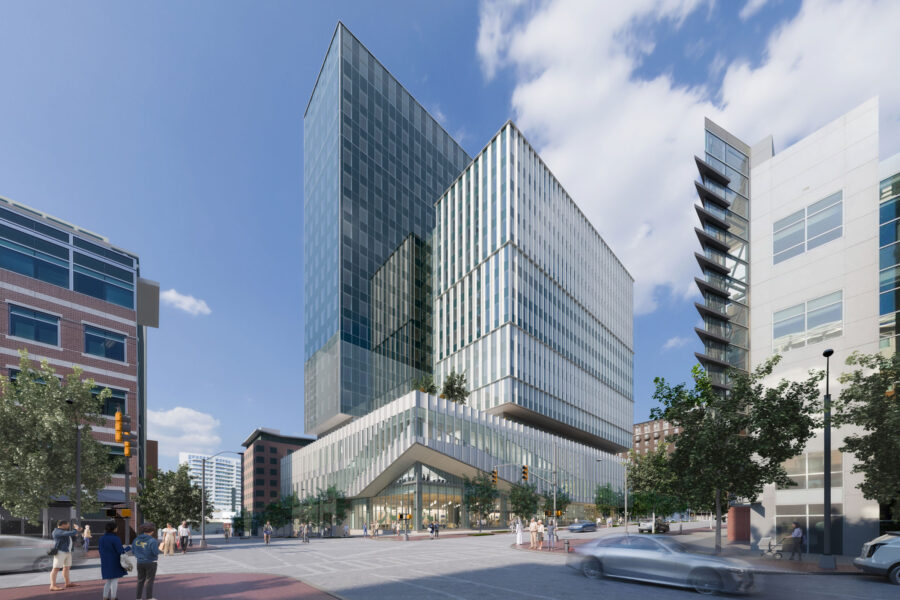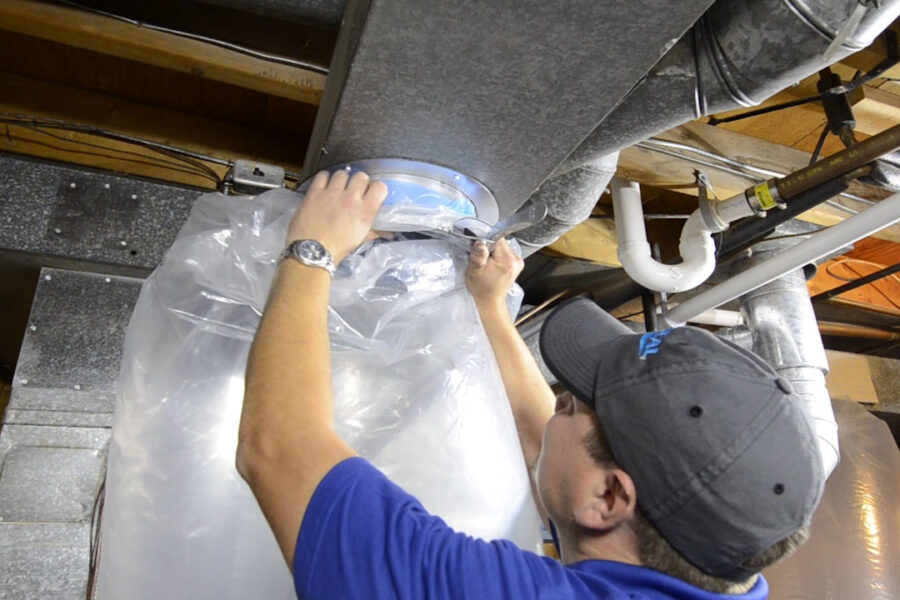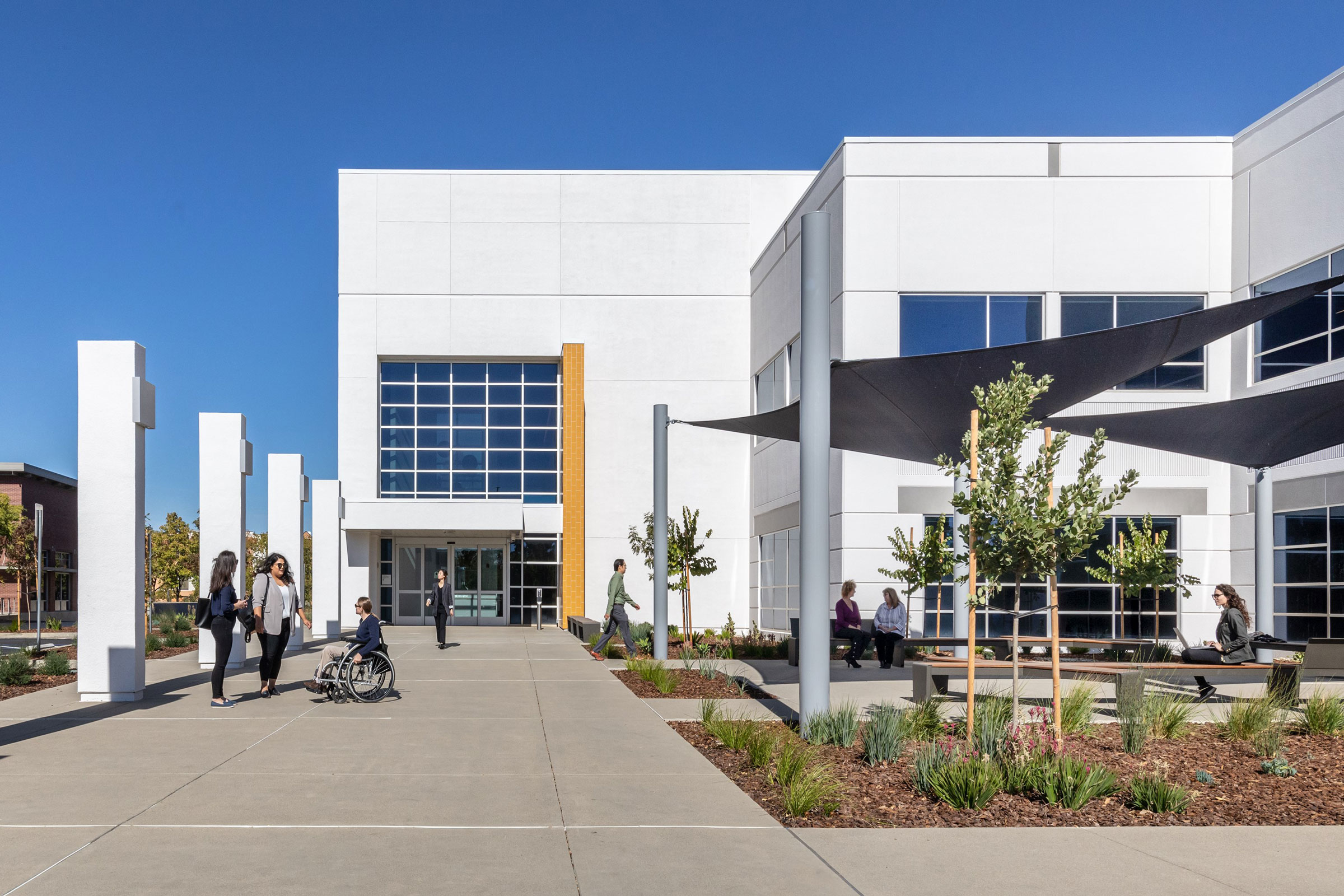Story at a glance
- All-electric building laws being enacted at all levels of government signal how the building sector can rapidly reduce its carbon emissions.
- Electric heat pumps will become the major way to heat and cool buildings.
- It is unclear if and when all-electric building laws will transfer to new residential builds.
Heating and cooling of residential and commercial buildings represents the largest percentage of energy use by all sectors at 40%, according to the US Department of Energy. Similarly, the EPA attributes the greatest amount of greenhouse emissions (31%) to the building sector. A quick and easy way to shrink both of those percentages simultaneously is to convert to all-electric buildings.
Let’s explore what all-electric building initiatives would look like for designers and builders.
What are All-Electric Buildings?

Tech Square 3 is planned to be grid-aware, meaning the all-electric building can shift demand to lower its overall carbon intensity. Rendering courtesy of EskewDumezRipple
The US Energy Information Agency (EIA) states that “all-electric building” can be defined in different ways, while proposing this definition: “All-electric buildings are defined here as buildings that consume only electricity for end uses that electricity can perform, such as space heating, cooling, water heating, and cooking. Other energy sources such as solar, natural gas, and fuel oil may have been consumed for on-site electricity generation.”
Note that this definition acknowledges the likelihood that fossil fuels may have been used to generate the electricity needed to operate the “end use” appliances in all-electric buildings.
The sustainability nonprofit RMI, in its document All-Electric Buildings are Healthy Buildings, states, “Building electrification means replacing gas, fuel oil, or propane appliances with more efficient electric ones.” RMI does not explicitly say that all-electric buildings must be run on electricity generated from renewable energy. However, RMI implies that it’s preferable compared to coal or gas generation of electricity when they state in the same paragraph that “battery storage and solar panels can be useful additions during power outages.”
What is the All-Electric Building Act?
The US Department of Energy finalized the Clean Energy for Federal Buildings rule in April 2024. This rule requires a 90% reduction in direct fossil fuel usage—primarily by oil and gas furnaces for heating and cooling as well as for hot water heaters—over the next five years, capped by the complete elimination of fossil fuel burning in certain new federal buildings and major renovations by 2030. For designers and builders this rule means the acceleration toward all-electric buildings and major renovations rests in your hands.
Concurrently state and local governments all over the country are mandating the same drive toward all-electric buildings. A notable example is New York’s 2023 All-Electric Buildings Law, which preceded the federal rule by one year. That law makes New York the first state in the nation to require all new buildings—with a few exceptions—to be all-electric by 2029, beginning with small buildings by 2026.
Although Berkeley, California became the first city to ban gas appliances in new builds in 2019, that law was overturned in 2023, prompting numerous California municipalities to urge their governor to pass statewide standards in the hope of avoiding a repeat of the Berkeley gas ban appeal.
It’s worth pointing out that while California does not have an all-electric building law, they do have a clean energy law stipulating a 80% clean electricity target by 2035, and 100% zero-carbon electricity with zero greenhouse gas emissions by 2040. An all-electric building practice will likely be a major part of achieving those lofty targets.
What are the Benefits of All-Electric Buildings?

The Iowa City Nest residence is an all-electric, low-carbon passive house designed by Sol design + consulting. Photo by Carl Sterner
There are multiple benefits of all-electric buildings. They are:
Climate-Friendly
All-electric buildings will reduce carbon emissions. Besides carbon emissions, this includes nitrous oxide and methane, both of which are more potent greenhouse gases compared to carbon dioxide. If all-electric appliances run on renewable energy, they will virtually eliminate all carbon emissions.
Cost-Saving
Not only are the costs of electrical appliances decreasing, they also eliminate fuel costs for home heating oil or gas appliances like stoves, water heaters, and clothes dryers.
Less Polluting
All-electric buildings prevent harmful air pollutants from being released indoors and outdoors. For example, recent studies indicate rates of asthma are greater among children living in homes with gas stoves. Similarly, they are higher in neighborhoods close to fossil fuel-burning power plants.
Safer
There is no risk of carbon monoxide poisoning from all-electric appliances like there is from faulty or poorly-adjusted gas appliances.
Air Sealing to Improve Energy Efficiency

Photo courtesy of Aeroseal
Sealing ductwork to prevent energy loss is an often overlooked way to conserve energy and lower the demands on the power grid. Electric heat pumps pose an additional problem because some people think they can’t generate sufficient heating or cooling in weather extremes.
“When you seal the ductwork you now have a higher velocity in the ductwork so the temperatures coming out of the registers are a lot higher. That makes the heat pump more comfortable, which in turn alleviates the fear of going from gas to electricity. Also, because we lower the energy load of the house, you’re lowering the amount of work the pump has to do, especially backup heat, and you’re saving money,” Bob Swilik, vice president of product strategy at Aeroseal told gb&d in an earlier interview.
What are the Challenges of All-Electric Buildings?
The fossil fuel industry largely sees the successes of the all-electric building campaign as a threat to the existence of their industry. Thus, they are engaged in a massive PR campaign to reassure doubters that their products are the best for residential and commercial and electric heat pumps are inefficient.
At this 2024 International Code Council meeting, held every three years, decarbonization rules were rejected despite expert panels’ recommendations due in large part to heavy pressure by the gas industry.
Those building codes are widely adopted by practically all jurisdictions in the nation.
Tips for Moving Toward All-Electric Buildings
Builders and architects can do a number of things now to speed the transition to all-electric buildings.
Install 200-amp circuits in homes instead of 100-amp circuits. More available amperage will allow electric appliances to be seamlessly integrated into homes in the future once rules requiring gas hookups are rescinded.
Choose a smart electric panel that integrates grid energy with any renewable generated by solar panels and battery storage. A smart panel will make it easier to direct the batteries to energize the building at certain times of the day when grid power is more expensive (in some areas), resulting in cost savings.
Rather than exchange gas water heaters and HVAC for electric, opt for electric heat pump versions of these major appliances. The latter are so much more efficient (up to 60%!) as their cost plummets.
For major renovations, do not switch out gas appliances or oil furnaces until they fail or experience significant reductions in efficiencies that no longer justify their continued operation. There’s no sense in discarding workable appliances until it’s necessary.
Induction stoves are the easiest swaps you can do right now, so start with them.




